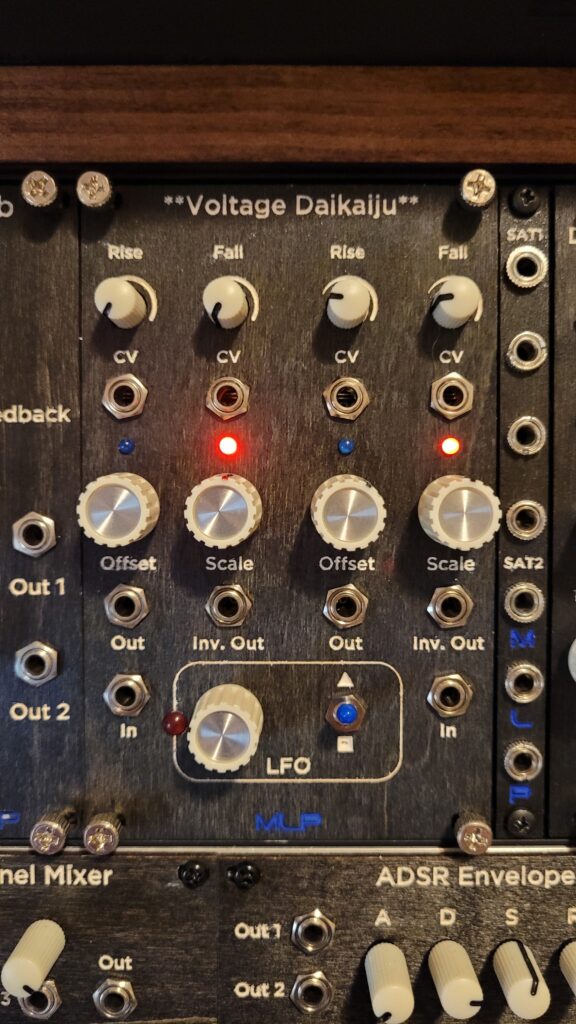
If the Voltage Kaiju was a big module, the Voltage Daikaiju is giant. An evolution on the concept behind one of our very first homebrew modules, the Voltage Daikaiju adds more flexibility and additional functionality to provide a multi-purpose utility for conditioning and shaping voltage.
Two independent channels offer scaling, offset and rise/fall slew over any input. Built-in LFO is normalled to the In jack to make the Voltage Daikaiju a standalone modulation source. Independent CV control over the Rise and Fall times allows for modulation of the modulation. Dedicated inverted out for each channel provides NOT logic gate functionality.
Schematic
As with any schematic found on the internet, exercise caution when building. Test the build before plugging it into your case. If you find mistakes in the schematic, or you have recommendations for improving the design, feel free to contact us and let us know.

BOM
BOM represents components that appear in the schematic. Components related to the External CV Input and Rise/Fall Stage, LED Stage, and Offset and Scaling Stage–except U2 and U3–will need to be doubled.
- Capacitors
- 10uf* (1) C1
- 100uf, electrolytic (1) C2
- Resistors
- 1k (5) R6, R10, R11, R13, R14
- 10k (6) R1, R2, R5, R7, R8**, R12
- 33k (1) R9**
- 56k (1) R3
- 100k (1) R4
- Potentiometers
- 100k (4) RV1, RV3, RV4, RV5
- 1M (1) RV2
- Diodes
- 1N4148 (2) D4, D5
- LED (3) D1, D2, D3
- ICs
- LM358 (1) U4
- TL072 (1) U3
- TL074 (1) U2
- TL082 (1) U1
- Audio jacks (4) J1, J2, J4, J5
- Switched audio jack (1) J3
- SPDT toggle (1) SW1
- VTL5C Vactrol (2) U5, U6
*10uf capacitor sets the frequency range of the LFO. Swapping this out with lower value capacitors will result in higher frequency oscillations. 10uf allows for some really slow LFO rates, but at the cost of losing faster rates.
**These are relatively high value resistors to account for some excessively bright LEDs in our stock. It might not be necessary to use such strong resistors in your own build.

Leave a Reply